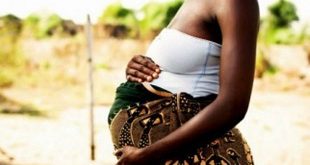
Podoconiosis: A neglected tropical disease causing havoc in Rwanda rural areas
A group of 25 people sit, their eyes downcast, on the verdant freshly mowed field at a churchyard in Musanze town. The sky above is thick with dark clouds, promising rains. It’s a perfect morning to be in their respective farms to prepare for the next planting season. But they are here because they are unable to do any farm work due to a debilitating, and neglected medical condition called podoconiosis.
Today, they have assembled at the church for a bi-weekly treatment regimen which includes foot-washing with soap, water and antiseptic, use of a simple emollient and bandaging. The treatment is courtesy of a project called Imidido Project run at the church compound.
Podoconiosis is a disease that affects those who walk, or work on their farms barefoot in volcanic areas. It is most prevalent in rural areas like around Musanze where people go to work on their farms barefoot; oblivious of the dangers they are subjecting themselves to.
“I felt one day a stinging itch on my right leg and I scratched it, thinking that it would go away. But it did not. Instead, both my legs continued swelling and I thought that I had been cursed,” says Rose Hirwa, 45, one of the patients.
Hirwa became an outcast from her family after her husband of 20 years chased her away from home, claiming that she was suffering from a curse. He said she had also become a burden due to her condition and he could not continue living with her. Hirwa has become a conspicuous beggar at Musanze bus station ever since.
According to Dr Rachna Pande, a specialist in internal medicine at Ruhengeri Hospital, podoconiosis is a condition where chronic lymphedema occurs in legs. This is said to occur due to chronic exposure to silica present in volcanic soil and occurs in people walking bare footed. “Filaria is another mosquito borne illness which can cause such swelling, but I was told that some cases tested in Kigali were negative.”
However, Dr. Pande clarifies there’s no treatment available for the condition. She says: “Anti-inflammatory drugs like diclofenac or Ibuprofen may help marginally. What is needed is soaking the feet in tolerably hot water for 14-20 minutes every day to soften the hard skin, scrubbing gently with a soft brush to remove dead and thickened skin.
In 2012, the World Health Organization (WHO) published targets for the elimination of neglected tropical diseases like podoconiosis, or reductions in their impact to levels at which they are no longer considered public-health problems. But despite its prevalence, podoconiosis has not received prominent attention like Ebola and Malaria from the international institutions and governments.
In Africa, podoconiosis has been documented in Ethiopia, Cameroon, Rwanda, Burundi, Uganda, Tanzania, Kenya, Sudan, and the islands of Cape Verde, Bioko, Sao Tome & Principe. These countries share a volcanic history, and the disease is primarily found in remote rural areas where subsistence farmers typically work in the fields barefoot.
For young Maria Uwineza, 12, the condition has regretfully interfered with her schooling. But she keeps hoping that one day, she will return to school.
She says the stigma associated with the disease has alienated her from her peers and she is not able to play with them anymore.
“My parents withdrew me from school since they feel I have no future. Instead I spend most of my time closed in the house, since even walking without any kind of support has become difficult,” says Uwineza, who before this had been a pupil at a local primary school.
“I just hope one day, my legs will be normal again and I will live my normal life. It’s hard living with this kind of condition,” Uwineza says.
For people like Hirwa, young Uwineza, and tens of others, the only help they have manage their diseased legs is the Imidido project.
This project is an initiative by an American philanthropist, Tonya Houston, who came to Rwanda from the USA nine years ago and saw the plight of those suffering from the crippling condition. She advised that the disease can only be prevented through wearing shoes but it cannot be cured.
“I came, I saw and I said that I wanted to conquer the disease by changing the mindset of the patients who think that this disease is as a result of curse. Now several of them are coming to the centre and we are helping them to change their mindsets and manage the disease.
“It can’t be cured but it can be contained. And this is what we are doing here,” she adds.
In order to achieve that feat, Houston has employed several people. Every other Monday and Thursday, those who suffer from it come to the centre where their legs are washed with drugs that help to contain the progress of the disease. Then the other employees go around the villages and schools to educate people to stop working in their farms bare feet.
Patients and the community are educated also that they should not take the disease as a curse but just a normal one which comes as a result of their normal work in their farms.
Apart from that, Houston has also managed to purchase the patients a maize mill they operate in Musanze town, from which they share the proceeds to sustain themselves.
“The posho mill has become a godsend to our community of people suffering from podoconiosis because we’re now able to sustain ourselves. We lack the capacity to do any other kind of work because of this condition,” says Julius Tuyisenge, a patient.
According to Dr. Francis Hakizimana, it’s hard to document cases of podoconiosis, and come up with realistic statistics since most people believe it’s an inherited condition and a curse, and most patients don’t go to hospitals mainly due to ignorance about the disease mixed with rural poverty.
Dr. Hakizimana adds that although the disease is both preventable (by avoiding contact with irritant soil) and treatable (through simple, inexpensive foot hygiene and protection), there are as yet no government-backed assistance programs for addressing prevention and treatment of podoconiosis.
****
editor@independent.co.ug
 The Independent Uganda: You get the Truth we Pay the Price
The Independent Uganda: You get the Truth we Pay the Price



